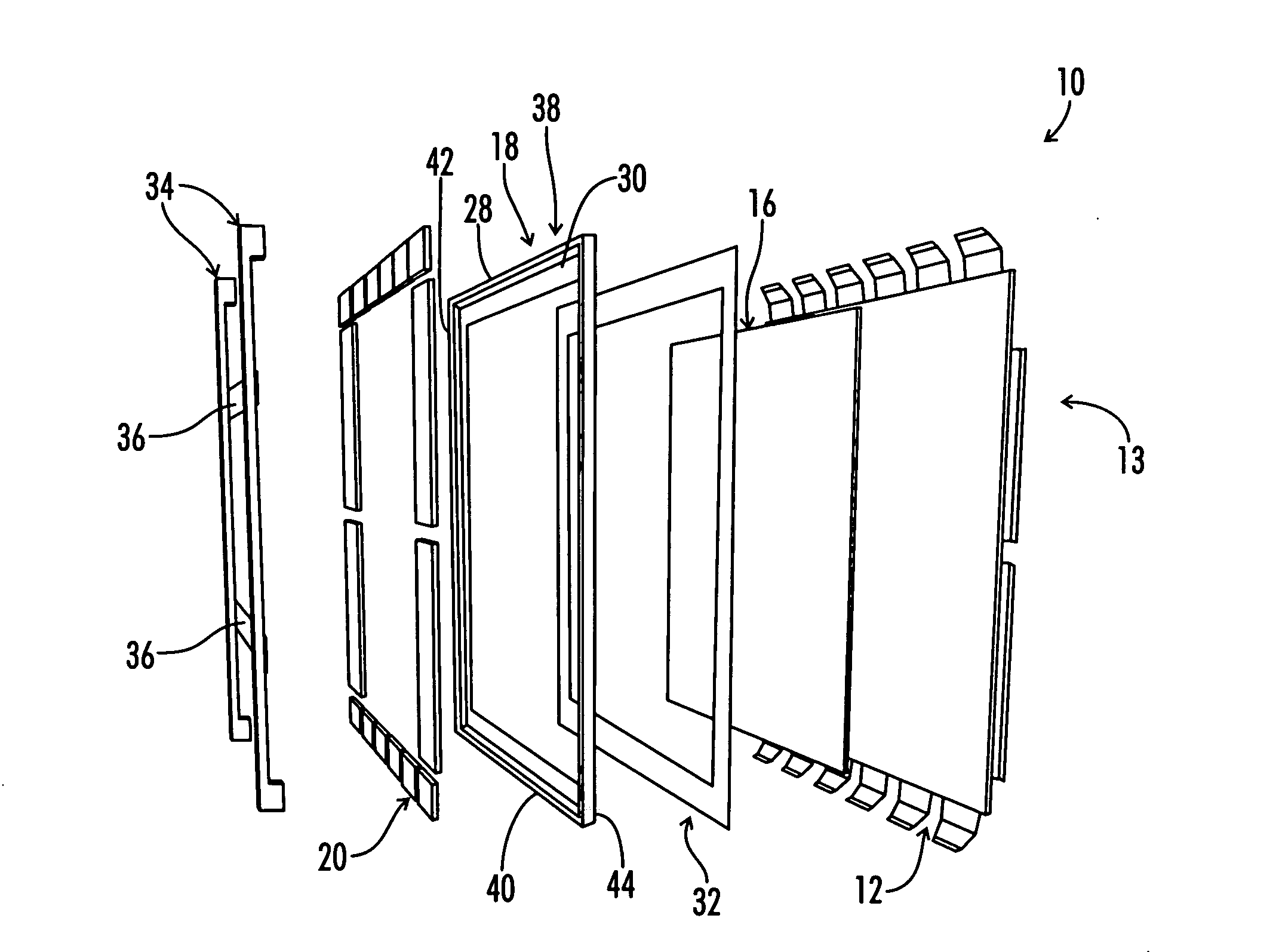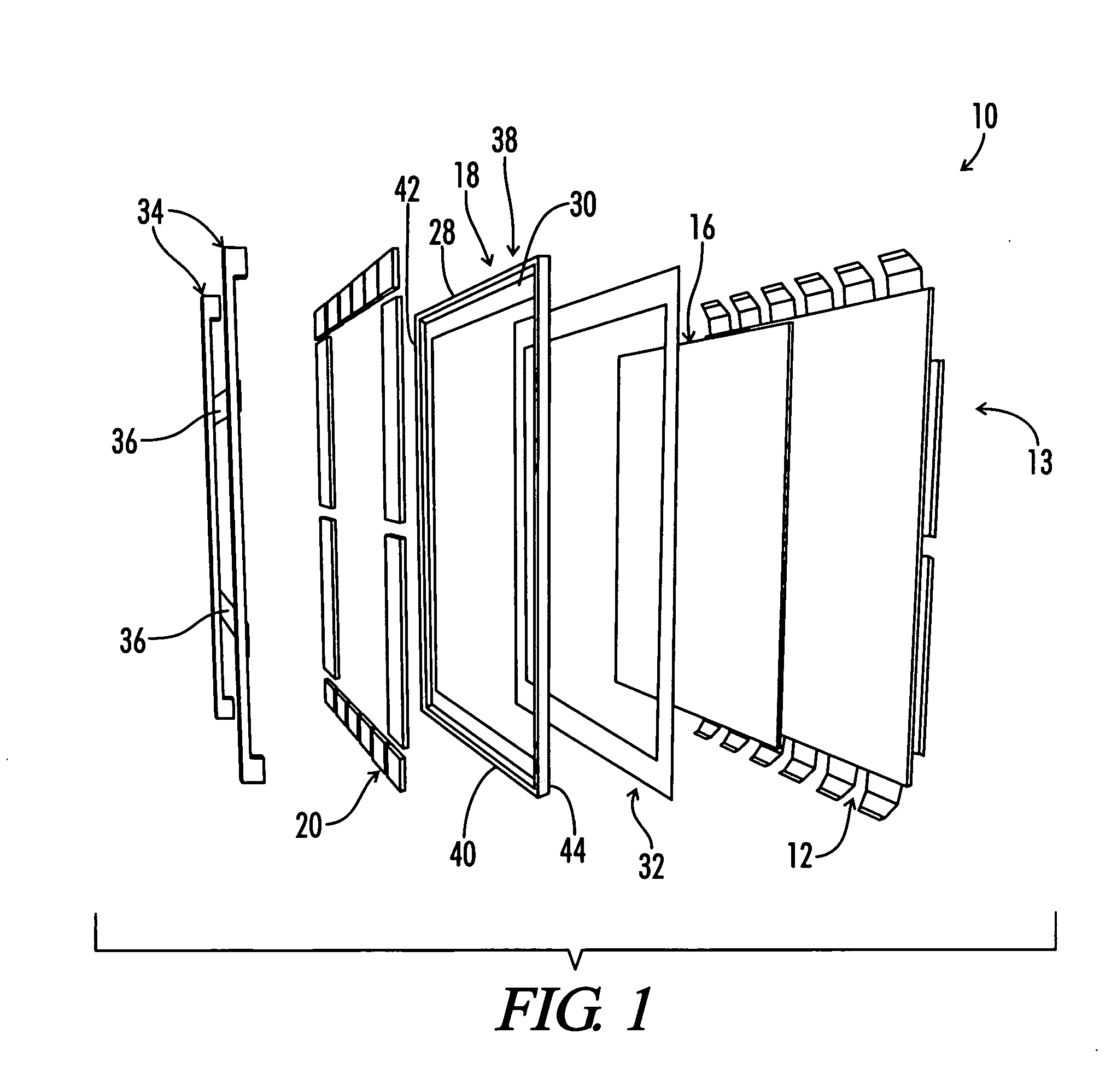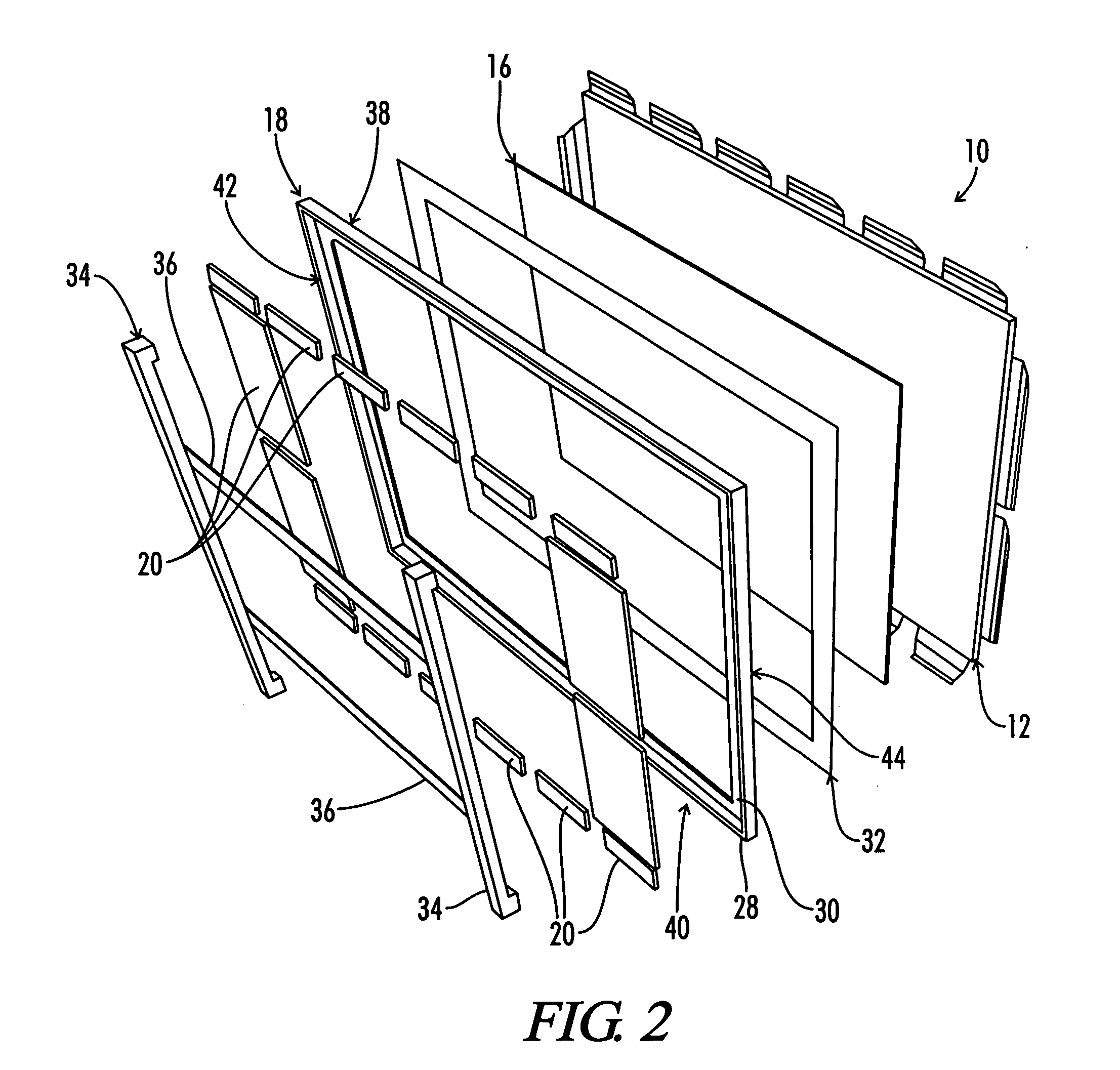Display device having improved properties
- Summary
- Abstract
- Description
- Claims
- Application Information
AI Technical Summary
Benefits of technology
Problems solved by technology
Method used
Image
Examples
example one
[0122] A 42″ commercial PDP (Hitachi Ultravision HD42T51) is thermally tested in the as-received condition. Thermal characterization of the panel is conducted using an infrared camera (IR Flexcam® infrared camera) focused on the front of the PDP. The testing conducted is under conditions of 100 % illumination (full white).
[0123] The same PDP is then dismantled and the existing aluminum chassis and steel subframe (FIG. 17) replaced by the inventive frame as shown in FIG. 18. Thermal testing is then repeated, with results reported in Table 1.
TABLE 1AverageFull WhiteTemperatureChassisAverageRise inWeightTemperatureBottom ZonelbsRise ° C.° C.State of the Art23.928.125.0Optimized Frame12.624.520.6Improvement11.33.64.4
[0124] As shown in Table 1, a weight reduction of 11.3 lbs is achieved and an average temperature reduction of 3.6° C. is achieved. This reduction in temperature is important because, as shown in Example Two, luminance and image sticking, both important display parameters...
example two
[0127] To demonstrate that lower temperatures improve luminosity and reduce image sticking, both important display parameters, an experiment is conducted to vary the PDP screen temperature over a wide range and measure corresponding luminance and image sticking trends with temperature. A PDP screen is split into three zones with, respectively, no heat spreader, a low thermal conductivity (approximately 1 W / m° K) acrylic thermal interface material bonded to the aluminum chassis, and a high in-plane thermal conductivity (approximately 400 W / m° K) graphite heat spreader contacting the PDP glass, as shown in FIG. 19. A white spot test pattern is then set up with two spots / zone, as shown in FIG. 20, and the temperature of each spot measured every two minutes as the PDP panel heats up. A typical IR image is shown in FIG. 21 with a chart of temperature versus time shown in FIG. 22. The advantage of the graphite spreader in minimizing temperature rise in the white spot area is apparent. Not...
PUM
 Login to View More
Login to View More Abstract
Description
Claims
Application Information
 Login to View More
Login to View More - R&D
- Intellectual Property
- Life Sciences
- Materials
- Tech Scout
- Unparalleled Data Quality
- Higher Quality Content
- 60% Fewer Hallucinations
Browse by: Latest US Patents, China's latest patents, Technical Efficacy Thesaurus, Application Domain, Technology Topic, Popular Technical Reports.
© 2025 PatSnap. All rights reserved.Legal|Privacy policy|Modern Slavery Act Transparency Statement|Sitemap|About US| Contact US: help@patsnap.com



